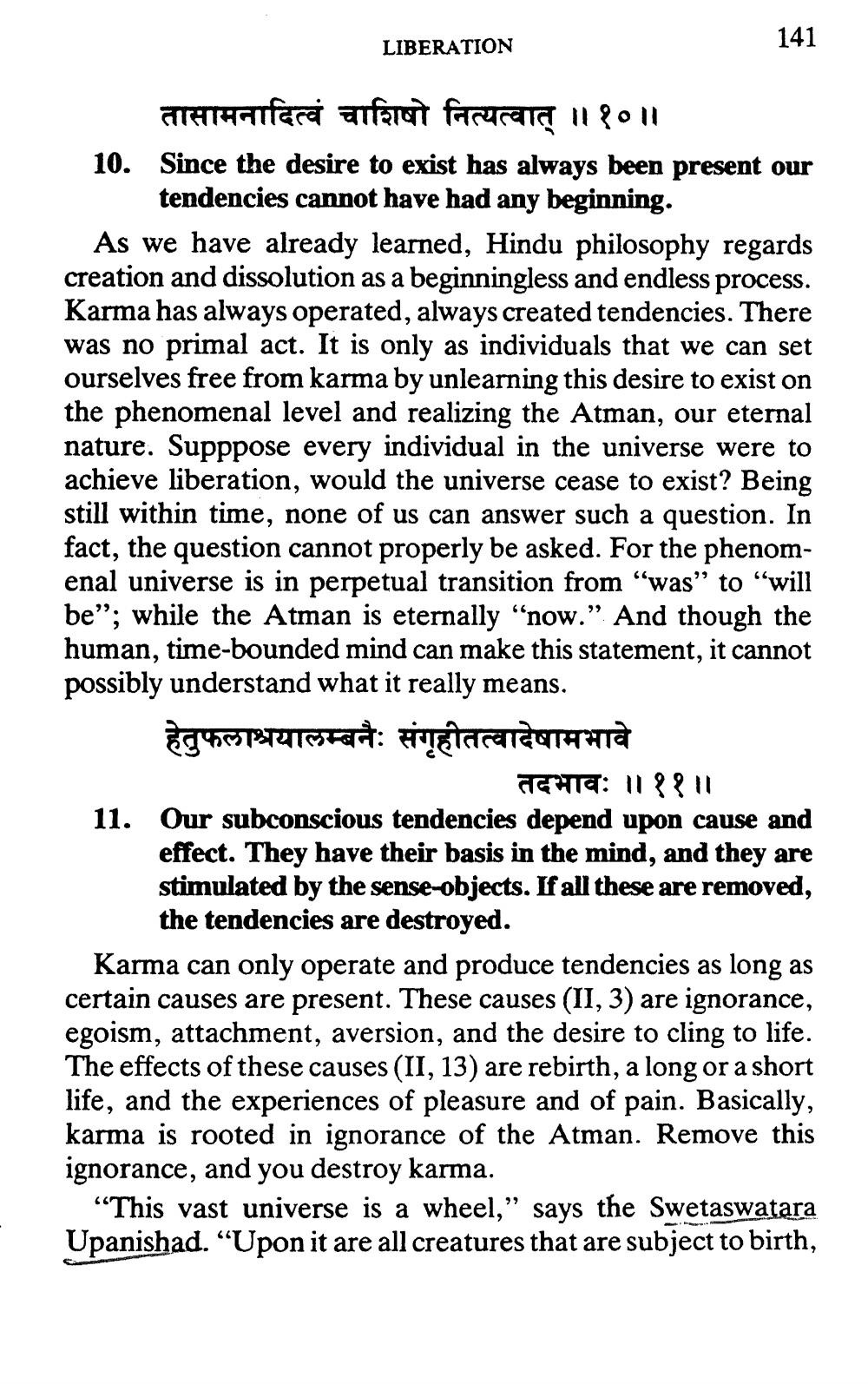________________
141
141
LIBERATION
तासामनादित्वं चाशिषो नित्यत्वात् ॥१०॥ 10. Since the desire to exist has always been present our
tendencies cannot have had any beginning. As we have already learned, Hindu philosophy regards creation and dissolution as a beginningless and endless process. Karma has always operated, always created tendencies. There was no primal act. It is only as individuals that we can set ourselves free from karma by unlearning this desire to exist on the phenomenal level and realizing the Atman, our eternal nature. Supppose every individual in the universe were to achieve liberation, would the universe cease to exist? Being still within time, none of us can answer such a question. In fact, the question cannot properly be asked. For the phenomenal universe is in perpetual transition from "was" to "will be”; while the Atman is eternally "now.” And though the human, time-bounded mind can make this statement, it cannot possibly understand what it really means. हेतुफलाश्रयालम्बनैः संगृहीतत्वादेषामभावे
data: 118811 Our subconscious tendencies depend upon cause and effect. They have their basis in the mind, and they are stimulated by the sense-objects. If all these are removed,
the tendencies are destroyed. Karma can only operate and produce tendencies as long as certain causes are present. These causes (II, 3) are ignorance, egoism, attachment, aversion, and the desire to cling to life. The effects of these causes (II, 13) are rebirth, a long or a short life, and the experiences of pleasure and of pain. Basically, karma is rooted in ignorance of the Atman. Remove this ignorance, and you destroy karma.
“This vast universe is a wheel," says the Swetaswatara Upanishad. “Upon it are all creatures that are subject to birth,
11.




